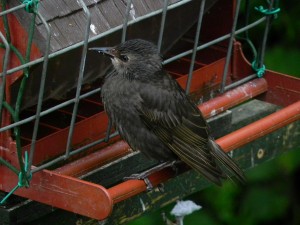Declining Starlings

Seen recently at the Visitor Centre squeezing themselves through the mesh that covers our bird tables, Starlings can be found all over Britain in what appears to be relatively large numbers, but there’s a problem. Figures from the British Trust of Ornithology (BTO) have shown that Starling numbers in Britain have dropped by 66% since the mid 1970s. This can be seen as a problem because, while they are seen by many as a pest, they actually play an important role as a natural pest controller, with many of the insects they eat being crop pests. As well as this they also provide food for a number of other animals, including Sparrowhawks.
As yet, it’s unclear exactly why numbers in Britain have dropped so much, but it is likely to be connected to the decline in soil invertebrates seen over the last few years. RSPB is starting to research the decline in Somerset and Gloucestershire, hoping to shed light on how farming processes could be affecting the population sizes. It may be that we will all need to become a little more ‘wildlife-friendly’ to ensure that Starling numbers increase again.
Georgina Bowie,
Visitor Centre Assistant
Help protect Scotland’s wildlife
Our work to save Scotland’s wildlife is made possible thanks to the generosity of our members and supporters.
Join today from just £3 a month to help protect the species you love.
Preface
Seen recently at the Visitor Centre squeezing themselves through the mesh that covers our bird tables, Starlings can be found all over Britain in what appears to be relatively large …
